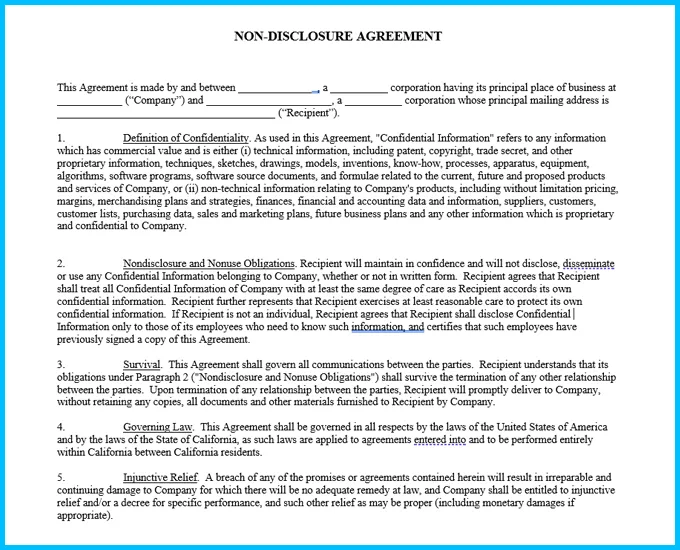
A Non-Disclosure Agreement (also referred to as an NDA or confidentiality agreement) is a contract between two parties promising to keep certain information confidential. Confidential information is often sensitive, technical, commercial, or valuable in nature (e.g., trade secrets or proprietary information).
Both parties sign the Confidentiality Agreement, creating a binding contract to keep the confidential information secret. Be sure you understand how to write an NDA before drafting your own, or learn more about an NDA with our NDA guide.
A Non-Disclosure Agreement aims to prevent confidential information from being disclosed publicly or otherwise used by any parties you share information with.
A signed NDA sets out the legal framework to protect intellectual property and information from being stolen, sold, or shared with third parties, such as business competitors.
An NDA is typically used to:
Examples of situations when an NDA is used by a company:
The following confidentiality agreement sample is an excellent example of how you can structure your own basic NDA agreement template.